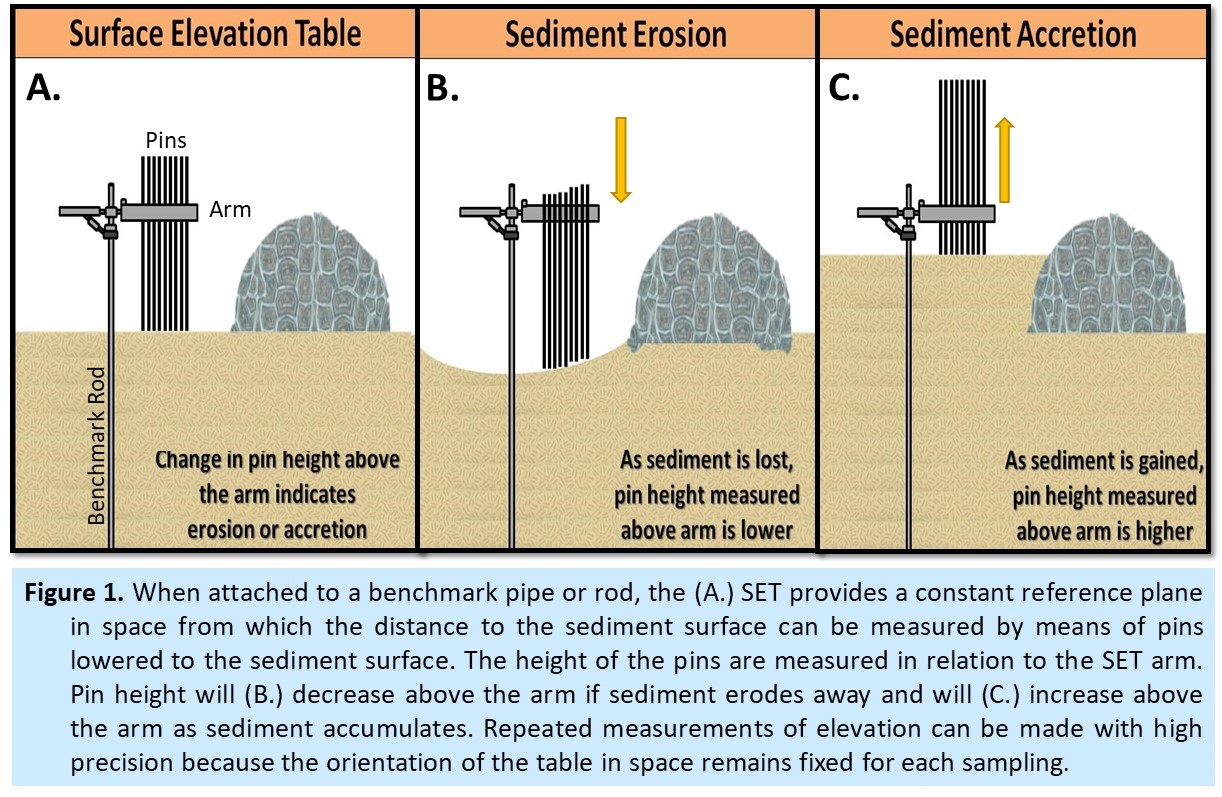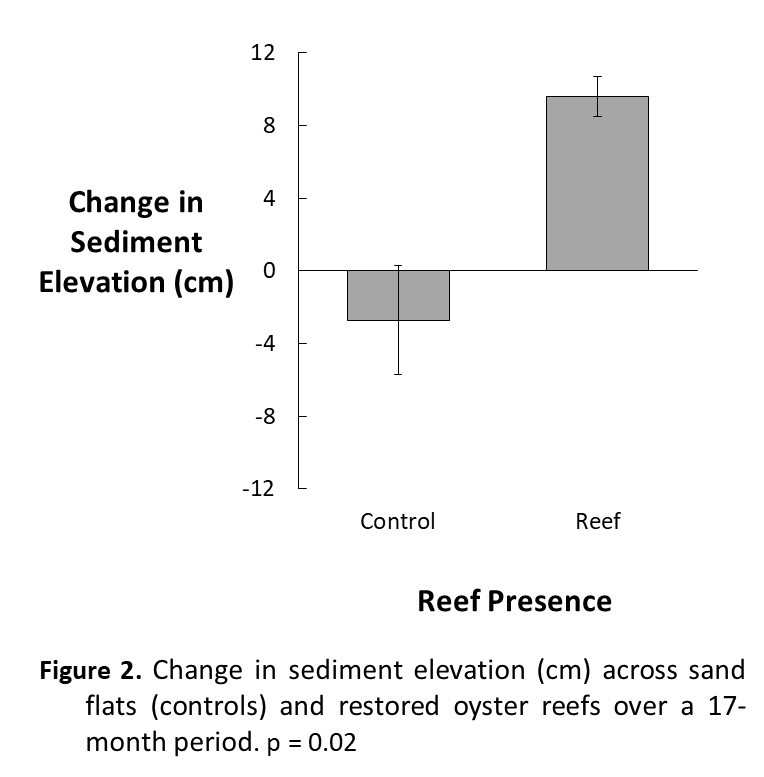Building Living Shorelines in the IRL: The Data Behind the Practice
Oyster reefs provide a multitude of ecosystem functions; improvement of water quality, storm surge protection, increased habitat and feeding grounds for commercially important species, shoreline stabilization, and nutrient cycling. These reefs act as a natural buffer, protecting shorelines through wave energy absorption, reduced erosion, and sediment trapping, making them a perfect component of living shoreline restoration. Unlike traditional hardened shorelines such as seawalls, living shorelines utilize important habitats (e.g. oyster reefs) to protect shorelines against erosion and storm surges, increase ecosystem function, while also adapting to changing environments. It has been documented in many ecosystems around the world that oyster reefs naturally build up shorelines by trapping sediments behind the reef relief and thus stabilize coastal lands, however this has yet to be tested in relation to living shoreline restoration.
As scientists we are tasked with providing robust scientific data to support (or reject) this claim. The Indian River Lagoon (IRL) is a highly dynamic system, and long-term monitoring of sediment accretion, in relation to living shoreline restoration, is imperative to attain a detailed understanding of the mechanisms behind sediment stabilization. To test whether living shorelines promote sediment accretion and stabilization of land, Florida Oceanographic Society has installed surface elevation tables (SETs) around the IRL to measure precise changes in shoreline elevation. The SETs (Figure 1) are a highly accurate, nondestructive method used to examine fine scale sediment elevation changes. These highly accurate but small spatial scale measurements are paired with larger spatial scale shoreline profile methods. Together, these measurements provide a clear picture of the effect of living shorelines on shoreline protection. By collecting qualitative and quantitative data, Florida Oceanographic can help managers and decision makers anticipate the possible responses of restoration activities within the IRL.


In a preliminary study conducted in 2016, Florida Oceanographic used SETs to document how restored oyster reefs affected sediment elevation in comparison to sand flats (control) and observed significant sediment accretion immediately adjacent to reefs. Sand flats lost an average of 2.71 ± 3.00 cm in elevation over 17 months, while the oyster reefs increased sediment accretion behind them by 9.60 ± 1.08 cm (Figure 2). This research led to more questions – How does the profile of an oyster reef influence accretion? Do high profile reefs trap more sediment than low profile reefs and sand flats?
Florida Oceanographic has set out to answer these questions this year by expanding the SET network and the monitoring plots. Oyster reefs of contrasting profile (high and low) paired with nearby sand flats as controls will be monitored for the next year. Our findings are of general interest to ecologists, particularly those interested in how restoration activities can influence ecosystem structure and function. Additionally, documented quantification of sediment elevations in relation to living shoreline restoration will help to inform those involved in regional and global land management programs as well as local homeowners in the IRL.
Written by Dr. Loraé T. Simpson, Director of Scientific Research and Conservation at Florida Oceanographic Society. She can be reached at [email protected].
